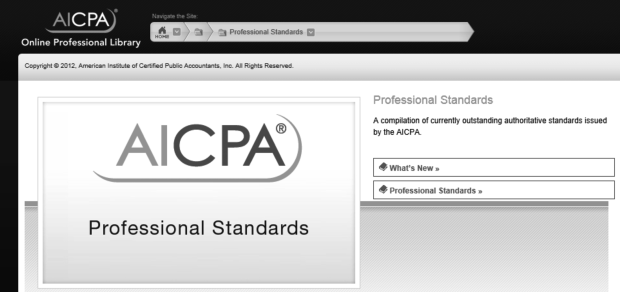Auditing Standard-Setting Process
Concern has always existed as to who should set auditing standards for the independent auditor. Prior to the establishment of the SEC, Congress debated having audits conducted by governmental auditors; however, the auditing standard-setting process remained in the private sector. SASs were created by the Auditing Standards Board (ASB) as the AICPA's senior technical committee on auditing standards.
Auditing interpretations on the application of SASs are created by the staff of the Auditing Standards Division of the AICPA. The interpretations are not considered as authoritative as SASs. However, auditors must justify any departure from an auditing interpretation issued by the Auditing Standards Division of the AICPA. Other publications of the Auditing Standards Division include a number of Industry Audit Guides (Exhibit 6-6) and Statements of Position. These guidelines are recommendations of various AICPA committees and task forces when applying generally accepted auditing standards to industry-specific audit engagements. The auditor needs to be aware of these interpretative guidelines and should be prepared to explain any departures from such audit guidance.
Exhibit 6-6 AICPA Audit and Accounting Guides
Source: AICPA Online Professional Library.
An overview of the current hierarchy of authoritative auditing support is presented in Exhibit B. The auditor needs to understand each of the sources listed, particularly the PCAOB's auditing standards and the predecessor SASs by the AICPA.
Exhibit 6-7 Auditing Authoritative Support
Source: Modified from Accounting & Auditing Research: Tools & Strategies, 7th ed. Reprinted with permission of John Wiley & Sons, Inc.
Primary Authoritative Support
Secondary Authoritative Support
Unlike an audit that expresses whether the financial statements are in conformity with GAAP, the accountant's examination of prospective financial statements provides assurance only as to whether (1) the prospective financial statements conform to the AICPA's guidelines, and (2) the assumptions used in the projections provide a reasonable basis for a forecast or a projection. The accountant must provide a report on any attestation service provided, as described in the various attestation and auditing standards. (See Exhibits 6.4 and 6.5.)
AICPA Online Professional Library Database
The AICPA Online Professional Library database includes a comprehensive compendium of the AICPA literature, consisting of Professional Standards, Accounting Trends and Techniques, Technical Practice Aids, Auditing and Accounting Guides, and Audit Alerts. This database is available by subscription from the AICPA.
To conduct auditing research using the AICPA's online database would consist of the following steps. The opening screen of the online version of the database appears in Exhibit 6-8. This screen lists the various subdatabases available, such as audit risk alerts and PCAOB Standards. Clicking on the AICPA Professional Standards link provides the opening screen to the Professional Standards as depicted in Exhibit 6-9. The table of contents (TOC) appears in Exhibit 6-10. Note the various standards under Professional Standards, from auditing standards and valuation services to quality control and tax service standards.
Exhibit 6-8 AICPA Online Publications Screen
Source: Copyright 2012. American Institute of Certified Public Accountants, Inc. All rights reserved.

Exhibit 6-9 AICPA Professional Standards Screen
Source: Copyright 2012. American Institute of Certified Public Accountants, Inc. All rights reserved.

Exhibit 6-10 AICPA Online Library Table of Contents
Source: Copyright 2012. American Institute of Certified Public Accountants, Inc. All rights reserved.

To conduct a specific search using the Professional Standards, enter a keyword search term such as going concern in the search window, and the results appear in Exhibit 6-11. Clicking on the second item, AU Section 341, results in the guidance for an auditor's consideration of an entity's ability to continue as a going concern, as depicted in Exhibit 6-12. This Professional Library is a major database in providing guidance for the practitioner by offering various services.
Exhibit 6-11 Search Tab
Source: Copyright 2012. American Institute of Certified Public Accountants, Inc. All rights reserved.

Exhibit 6-12 Search Screen Results
Source: Copyright 2012. American Institute of Certified Public Accountants, Inc. All rights reserved.

